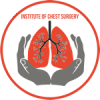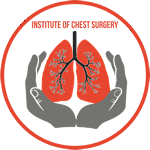Lung cysts are fluid-filled sacs that can develop within the lung tissues. These cysts are typically air-filled spaces, often discovered incidentally during medical imaging tests, such as chest X-rays or CT scans. While lung cysts can be benign and asymptomatic, they may also indicate an underlying lung condition that requires medical attention. In this blog post, we will explore what lung cysts are, their potential causes, symptoms, and when they might require treatment.
Understanding Lung Cysts
Lung cysts are defined as small, thin-walled sacs filled with air or fluid that develop within the lung parenchyma. They can vary in size and may be solitary or multiple. Lung cysts can occur in people of all ages, from infants to the elderly. They are classified into different types based on their characteristics:
1. Congenital Lung Cysts
Some individuals are born with lung cysts, and these are known as congenital cysts. These cysts are often detected during prenatal ultrasounds or in infancy.
2. Acquired Lung Cysts
Acquired lung cysts develop later in life and can result from various conditions or factors, such as infections, inflammation, or underlying lung diseases.
3. Simple Lung Cysts
Simple lung cysts are usually benign and appear as small, well-defined air-filled spaces. They are often discovered accidentally during routine imaging tests.
4. Complex Lung Cysts
Complex lung cysts may have thicker walls and may contain fluid or debris. They can be associated with certain lung diseases and require further evaluation.
Do Lung Cysts Require Treatment?
The necessity for treatment depends on various factors, including the type of lung cyst, its size, location, and the presence of symptoms. In many cases, simple lung cysts are harmless and do not require specific treatment. However, certain scenarios may warrant medical attention:
1. Symptomatic Lung Cysts
If lung cysts cause symptoms such as persistent coughing, shortness of breath, or chest pain, medical evaluation is essential. Symptomatic cysts may indicate an underlying issue that needs to be addressed.
2. Complex Lung Cysts
Complex lung cysts, especially those with irregular walls or containing fluid, may require further evaluation to rule out malignancy or infection.
3. Enlarging Cysts
If a lung cyst is observed to be growing or changing in size during follow-up imaging, it may need further investigation to identify the underlying cause and assess the need for treatment.
4. Associated Lung Diseases
Lung cysts may be linked to specific lung conditions, such as Lymphangioleiomyomatosis (LAM), Birt-Hogg-Dubé syndrome, or Pneumocystis pneumonia. Treating the underlying lung disease can help manage the cysts.
5. Concerns of Lung Cancer
In rare cases, lung cysts can be associated with lung cancer or other malignancies. Suspicious cysts may require further testing, such as a biopsy, to rule out cancer.
Treatment Options for Lung Cysts
The treatment approach for lung cysts depends on their type, size, location, and the presence of symptoms. Here are the potential treatment options:
1. Observation and Monitoring
If the lung cysts are small, asymptomatic, and diagnosed as simple cysts, the healthcare provider may choose to observe them periodically through follow-up imaging tests. Many simple cysts remain stable over time and do not require intervention.
2. Drainage or Aspiration
Large or symptomatic lung cysts that cause discomfort or hinder lung function may be drained or aspirated using a thin needle. This procedure helps to relieve symptoms and reduce cyst size.
3. Surgery
In cases where lung cysts are large, complex, or associated with serious lung diseases, surgical intervention may be necessary. The surgeon may remove the cysts or a portion of the lung tissue if needed.
4. Management of Underlying Lung Diseases
If lung cysts are linked to an underlying lung condition, such as LAM or Birt-Hogg-Dubé syndrome, addressing the primary disease can help manage the cysts effectively.
5. Immunosuppressive Therapy
For certain conditions associated with lung cysts, such as LAM, immunosuppressive medications may be prescribed to slow the progression of the disease and cyst growth.
Conclusion
Lung cysts are fluid-filled sacs that can develop within the lung tissues, often detected incidentally during medical imaging tests. Simple lung cysts are usually benign and may not require treatment. However, in some cases, lung cysts may cause symptoms or be associated with underlying lung diseases that necessitate medical attention.
The decision to treat lung cysts depends on factors such as cyst type, size, location, and the presence of symptoms. While many simple cysts can be monitored with periodic imaging, complex cysts, enlarging cysts, or cysts associated with lung diseases may require further evaluation and intervention.
If you suspect you have lung cysts or experience symptoms related to your lungs, it’s essential to seek medical advice promptly. A healthcare professional can accurately diagnose lung cysts, identify any underlying issues, and recommend the most appropriate treatment plan tailored to your specific condition.







